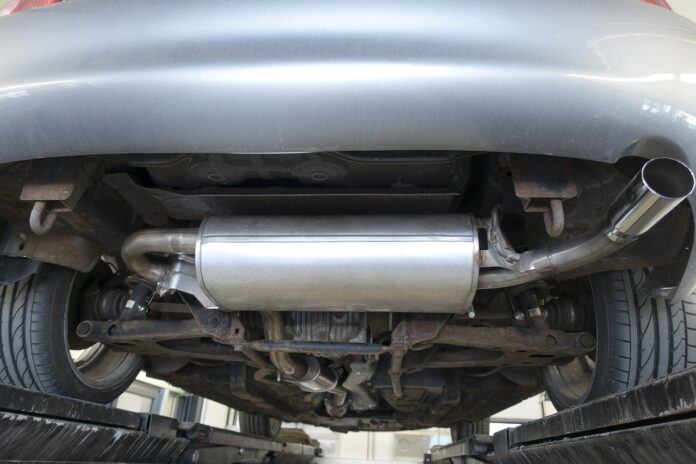Have you ever been on a highway that was so congested with different types of vehicles? Almost certainly, you did, and you can distinguish between cars that make noises and cars that don’t. As the exhaust valves open to release highly pressurised gas, the engine makes a lot of pulsating noise. These sound bursts add up to make a bothersome noise that causes unpleasant experiences for those nearby.
It’s a good thing then that mufflers were invented. It is an important component of a car’s exhaust system that reduces the amount of noise emitted by the exhaust. Most mufflers use some pretty clever technology to cancel out engine noise. In fact, as part of a campaign to reduce noise pollution, mufflers became a legal requirement in most cities.
How Do Mufflers Reduce the Car’s Noise?
A muffler is a device that is attached to the exhaust system of a car. Sets of tubes are located inside a muffler and are designed to create reflected waves that interfere with each other. When the gas expands, it reduces the pressure in the exhaust, muffles the sound, and thus reduces the noise. Baffles reduce exhaust volume by forcing the gases as they exit the muffler to pass through a series of holes in another chamber.
The layers of a muffler’s body are another feature that aids in sound reduction. It consists of two thin metal layers divided by a thicker, slightly insulated layer. It enables the pressure pulses to be absorbed by the muffler. Furthermore, its pipes are perforated, allowing tiny pressure pulses to bounce around the main chamber, cancelling some sound bursts.
The Types of Mufflers That Your Car Might Need
It is also critical to understand and thoroughly research your vehicle’s exhaust system. Take a look at these five most common types of mufflers you might want to get for your car.
- Baffle Type Muffler
It has multiple baffle spots inside its cylindrical body. The exhaust gas passes through the holes punched in the tubes’ walls, muffled by pulse reflection.
- Wave Cancellation Type Muffler
When exhaust gas enters the muffler, it is split into two parts and flows inside. The lengths of the parts have been modified so that the waves coincide as they emerge from the muffler. If the lengths of two paths differ by half a wavelength, sound reduction is achieved.
- Resonance Type Muffler
The Helmholtz resonators are connected in series in this type of muffler. It enables exhaust gas to pass through the pipe containing access port passes. The resonator filters out most of the engine noise.
- Absorber Type Muffler
It has a perforated tube that absorbs sound and reduces the high-pressure fluctuation of the exhaust gas by lowering the intensity of the noise. This occurs with very little restriction.
- Combined Resonance and Absorber Type Muffler
This muffler employs a resonating chamber to amplify and tune the existing exhaust sound, resulting in a more aggressive and deeper tone. To further reduce pressure and noise, resonance chambers are located at the end or in the middle of a straight-through absorber type of muffler. It has a perforated tube that absorbs sound and reduces the high-pressure fluctuation of the exhaust gas by lowering the intensity of the noise.
Your car is one of your most valuable assets, and it is wise to invest in mufflers to achieve complete silence in your vehicle. When it comes to your exhaust system, you do not have to be an expert, but always consider what you believe is the best fit for you and your vehicle.
Author: Radhe Gupta
Radhe Gupta is an Indian business blogger. He believes that Content and Social Media Marketing are the strongest forms of marketing nowadays. Radhe also tries different gadgets every now and then to give their reviews online.






